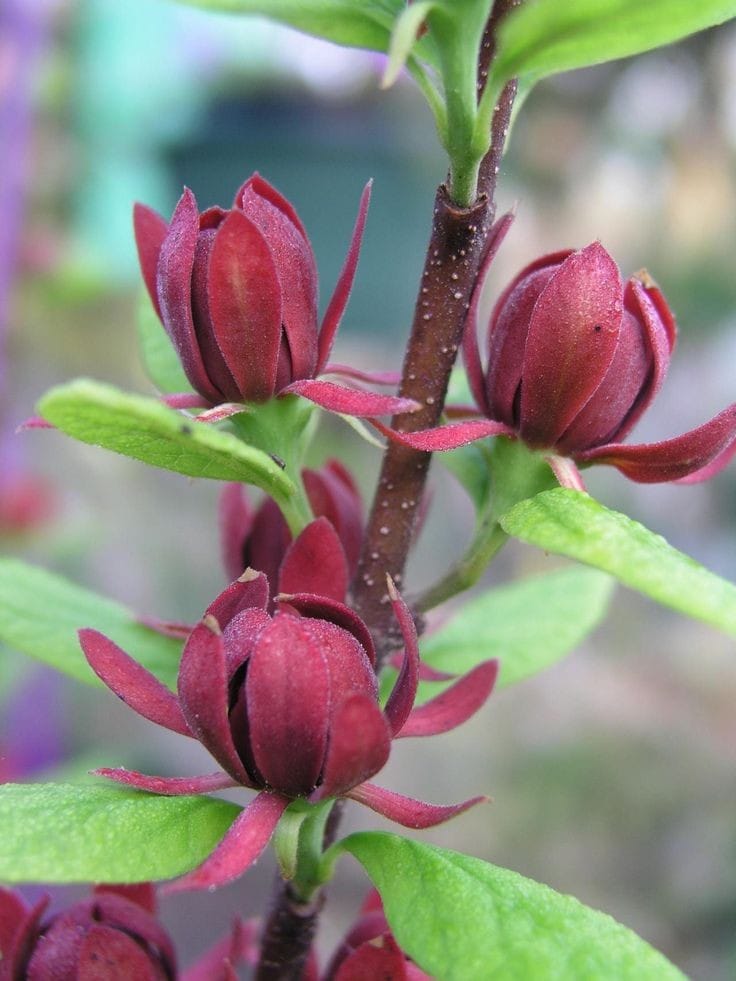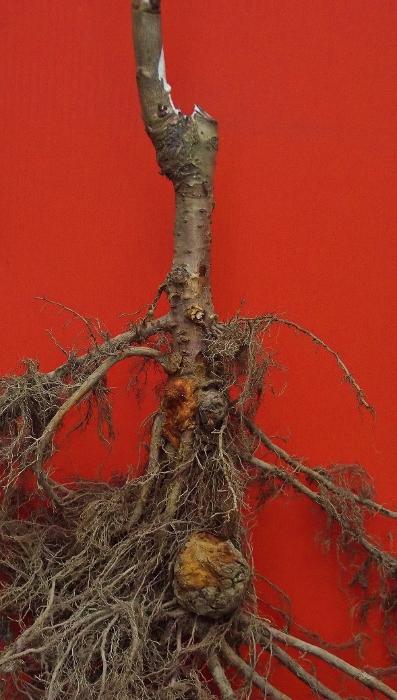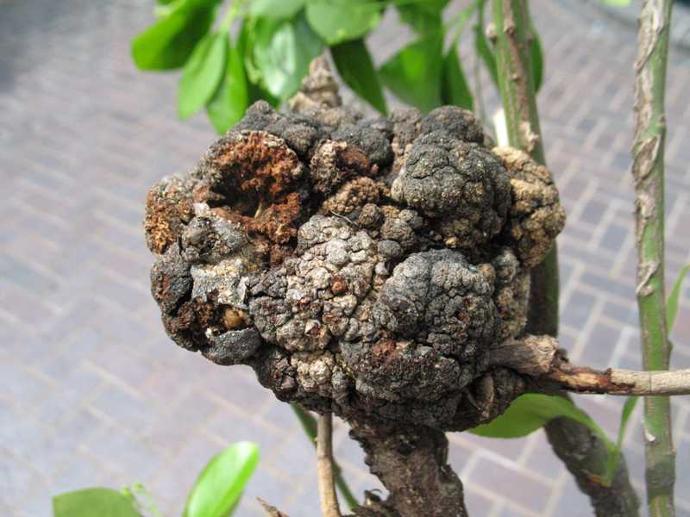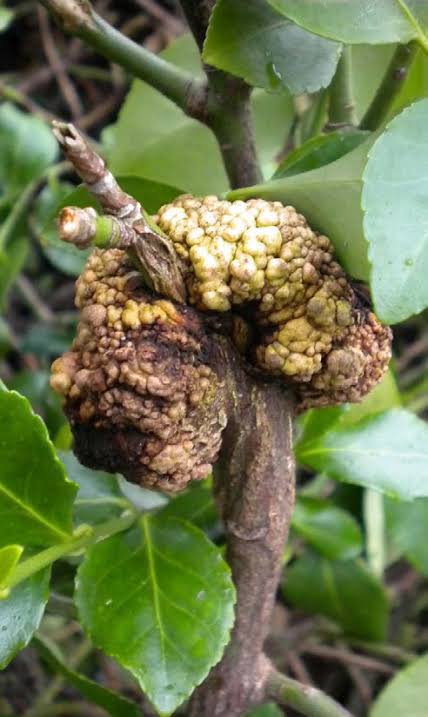Allspice Plant
Allspice, or Pimenta dioica, is a spice tree known for its aromatic leaves and berries. It requires well-draining soil and partial shade. Water regularly, especially during dry periods. Prune to shape the tree and remove dead or damaged branches for optimal growth.

Habit
Tree
Height
Up to 40 ft
Growth
Moderate
Soil
Well Drained, Loamy
Shade
Partial shade to Full Sun
Moisture
Moist or wet
Edible
Yes
Medicinal
Yes
Origin
Jamaica
Climatic Condition
Tropical
Temperature (°)
25-30 c
Humidity (%)
70-85%
Potting media
Loamy
Fertilizers
Organic Compost
Watering
Moderate, Keep Moist
Plant Weight
100-150 g
Flowering Time
Spring to Summer
Soil Ph level
6.0-6.5
Water Ph level
6.0-7.0
Soil EC
1.0 dS/m
Yield Per Plant
10-55 lbs (4.5-25kg) of berries per year
NPK ratio
20:10:10
life Span
3-5 yrs
Health Benefits
Anti-inflammatory
Suggested Grow Media or Potting Mix ?
50% loamy soil, 30% peat moss, 20% sand
Suggested Fertigation/Fertilizers
Fertilize every 4 weeks with a balanced fertilizer.
Common Diseases and Remedies
Bacterial Crown Gall
which is recognized by a bumpy, warty growth where the plant meets the soil
There is no treatment for this disease and the shrub should be removed and destroyed. Avoid planting in the same spot since bacterial crown gall will contaminate the soil where a diseased plant has been grown.
HEALTH BENEFITS
Allspice, a spice made from dried berries of the Pimenta dioica tree, offers several health benefits:
- Rich in Antioxidants: Allspice contains compounds like phenols, flavonoids, and other antioxidants that help protect the body from oxidative stress and damage from free radicals, supporting overall health.
- Anti-inflammatory Properties: The compounds in allspice, such as eugenol, have anti-inflammatory effects that may help reduce swelling, pain, and inflammation in conditions like arthritis.
- Digestive Health: Allspice is known to promote digestion by stimulating the secretion of digestive enzymes. It may help alleviate bloating, gas, and indigestion.
- Pain Relief: Due to its eugenol content, allspice may act as a natural pain reliever, particularly for muscle aches or joint pain.
- Blood Sugar Regulation: Some studies suggest that allspice may have an effect on lowering blood sugar levels, potentially helping with managing diabetes.
- Antimicrobial and Antibacterial: Allspice has antimicrobial properties that can help combat infections and prevent the growth of harmful bacteria.
- Boosts Immune System: The spice is rich in vitamins, particularly vitamin C, which helps strengthen the immune system and fight off illnesses.
- Improves Respiratory Health: Allspice may aid in clearing congestion and can be used as a natural remedy for cold and respiratory issues due to its soothing and expectorant properties.
As with any spice, it’s best to consume allspice in moderation. Always consult with a healthcare provider before making significant changes to your diet, especially if you have existing medical conditions.
What Is An Allspice Plant ?
The allspice plant (Pimenta dioica) produces fruits that are notable for their flavour resembling a mixture of cloves, cinnamon and nutmeg. The crop is usually harvested when the fruits are fully ripe, usually in late summer to early autumn. After harvest, the fruits are dried in the sun to preserve their flavour and aroma. Allspice plants can grow in tropical or subtropical areas with good drainage and adequate water. Pruning may be necessary to maintain plant health and encourage fruit production.

What Are The Different Types Of Allspice Plants?
There is a plant that produces the herb commonly called allspice: Pimenta dioica. However, there may be differences within species between cultivars or regional differences in growth behaviour. These changes may cause a slight difference in the taste or appearance of the fruit. There are also other plants with similar names, such as Carolina pimento (Calycanthus floridus), which is a completely different species and unrelated to the true allspice plant (Pimenta dioica).

How to care for Allspice Plant ?
1. Location
Allspice plants are generally grown outdoors in warm climates with full or partial sun. However, they can be grown in closed containers, especially in cold climates where they cannot be grown outdoors year-round.
2. Sunshine
Allspice plants thrive in full or partial sun. They prefer places that receive at least 4-6 hours of direct sunlight a day, especially in regions where the weather is cold. They can tolerate more shade in tropical areas, but still benefit from direct sunlight to encourage flowering and fruiting. In general, it is important to maintain solar balance for healthy growth and good visibility of delicious fruits.
3. Soil
Allspice plants prefer well-drained, fertile soil with slightly acidic to moderate pH (about 6.0 to 6.5). They grow best in soil rich in organic matter, such as compost or well-rotted manure; This helps retain moisture while providing essential nutrients. Sandy loam or loam loam are best for allspice plants because they allow for good drainage to prevent waterlogging while maintaining enough moisture to meet the plant's needs. Maintaining good soil quality is crucial to the overall health and vitality of your allspice plant; Promotes vigorous growth and abundant fruit production.
4. Hydration
Proper irrigation is very important for the health of your allspice plants. Here are some watering tips: Do not overwater as this will cause root rot and other problems. Make sure the pot or planting area has enough water to prevent water from seeping through the roots. Applying a layer of mulch around the base of your plants can help retain soil moisture and reduce watering frequency. Organic mulches such as bark chips or compost can improve soil structure and fertility. Adjust the watering frequency seasonally. Allspice plants will need water more frequently during the warm season of spring and summer and less during the cold autumn and cold winter months. You can help your allspice plants stay juicy and healthy by following these tips.

5. Nourishment
Nitrogen (N) is important for promoting leaf growth and all important plant growth. Phosphorus (P) aids root growth, flowering and fruiting. Potassium (K) contributes to overall plant health, stress and disease. When fertilizing allspice plants, follow the manufacturer's instructions on how much and how often to apply. It is generally recommended to fertilize plants throughout the growing season (spring and summer) to stimulate growth and fruit production. Avoid over-fertilization as this can lead to nutrient deficiencies and other problems. Regular soil testing can also help determine if there are certain nutrients that need to be addressed.
6. Issues
Allspice plants can face many problems such as pests, diseases and environmental stress. Here are some problems and solutions: Allspice plants can be affected by pests such as aphids, scale insects, spider mites and caterpillars. Monitor plants regularly for signs of pest damage, such as twisted leaves, webs or visible insects. You can use insecticide, neem oil, or horticultural oil as directed on the label to treat pests. Diseases affecting allspice plants include powdery mildew, leaf spot and root rot. Provide adequate ventilation around plants to reduce moisture and reduce the risk of fungal diseases. Avoid overwatering as wet soil encourages fungal growth. If your allspice plant is lacking essential nutrients such as nitrogen, phosphorus or potassium, it will show signs of nutrient deficiency. Test the soil to determine if there are nutrient deficiencies and amend the soil with fertilizer or organic matter to correct the deficiency. Improper pruning can cause problems such as reduced fruit production or increased diseases. Prune allspice plants carefully to remove dead or diseased branches, promote air circulation and maintain the desired shape. Avoid excessive pruning, especially during the growing season, as this can stress the plant.
What are the Benefits of Allspice Plant ?
Allspice herb has many culinary and medicinal uses:
Allspice Berry is a versatile spice that can be used in many dishes, including delicious casseroles, marinades, baked goods and desserts. They carry a warm, aromatic taste reminiscent of a mixture of cloves, cinnamon and nutmeg. Allspice contains antioxidants such as eugenol, quercetin and tannins that help neutralize harmful free radicals in the body and reduce oxidative stress. Compounds found in allspice, including eugenol, have been shown to have anti-inflammatory properties that help reduce inflammation and pain associated with arthritis. Ghosting and stomach ache are associated symptoms. Some studies show that compounds such as eugenol found in allspice are effective against bacteria, fungi, etc. It shows that it has antimicrobial properties that help prevent the growth of diseases. The warm, spicy aroma of allspice essential oil can be used in aromatherapy to promote relaxation, revitalization and stress reduction. In many traditional medicines, allspice is used to treat ailments such as colds, coughs, respiratory infections and colds.

FAQs About Growing Allspice Plant
1. How to care for allspice plants?
Water regularly to keep the soil regular but not waterlogged. Check humidity regularly and adjust watering frequency according to the environment and the plants' needs. Allspice plants thrive in full or partial sun. Place the plant where it will receive at least 4-6 hours of direct sunlight per day. If growing indoors, make sure there is adequate light or supplemental lighting near a south-facing window.
2. What are the uses of Allspice plant?
Allspice plant (Pimenta dioica) has many uses, including culinary and medicinal purposes: Allspice is used as a flavouring in many products such as perfumes, colognes, liqueurs (such as Jamaican rum) and tobacco blends. Its aromatic and spicy taste adds depth and complexity to this product. In traditional medicine, allspice is used in the treatment of many ailments such as colds, coughs, respiratory tract infections, gastrointestinal problems and colds. It is used in herbs, teas, lotions and creams for its healing properties. Allspice contains anti-bacterial properties that help prevent the growth of bacteria, fungi and other pathogens. It has been used historically as a natural product that helps extend the shelf life of foods.
3. Can I grow allspice plants indoors?
Yes, you can grow allspice plants indoors, especially if you live in a cold climate where growing them outdoors all year round is not possible. By ensuring good growth and proper care, you can grow allspice plants at home and enjoy their scent and medicinal benefits.
4. What type of pot is best for growing allspice plants?
Choose a pot large enough to accommodate the plant's root system. Allspice plants can grow very well, so it is recommended to use a pot that is at least 12-16 inches (30-40 cm) in diameter and 12-18 inches (30-45 cm) deep for mature plants. A larger pot will provide more room for root growth and help prevent the plant from overgrowing. Make sure there is adequate drainage at the bottom of the pot so that excess water can drain freely. Proper drainage is important to prevent standing water, which can cause root rot and other problems. You can put a layer of gravel or shards in the bottom of the pot to improve drainage. Consider the weight of the pot, especially if you plan to move it regularly. Terracotta pots are heavier but more durable, while plastic pots are lightweight and easy to use. Overall, choosing a pot with the right size, material, drainage and beauty will provide a home growing environment for your allspice plant.
5. From where can I buy Allspice plant?
You can buy allspice plants from many places, depending on your location and preferences. Attend a plant, farm market or botanical garden sale in your area. These events often feature local growers and hobbyists who may sell allspice plants. Join a local gardening group, forum, or community meeting where members can exchange or sell plants. You may find other farmers willing to share or sell their own allspice plant collections. Before purchasing allspice plants, consider factors such as plant size, health and variety, as well as regional climate and growth, to ensure best success. Also check the seller's shipping and returns policy, especially when purchasing plants online.


